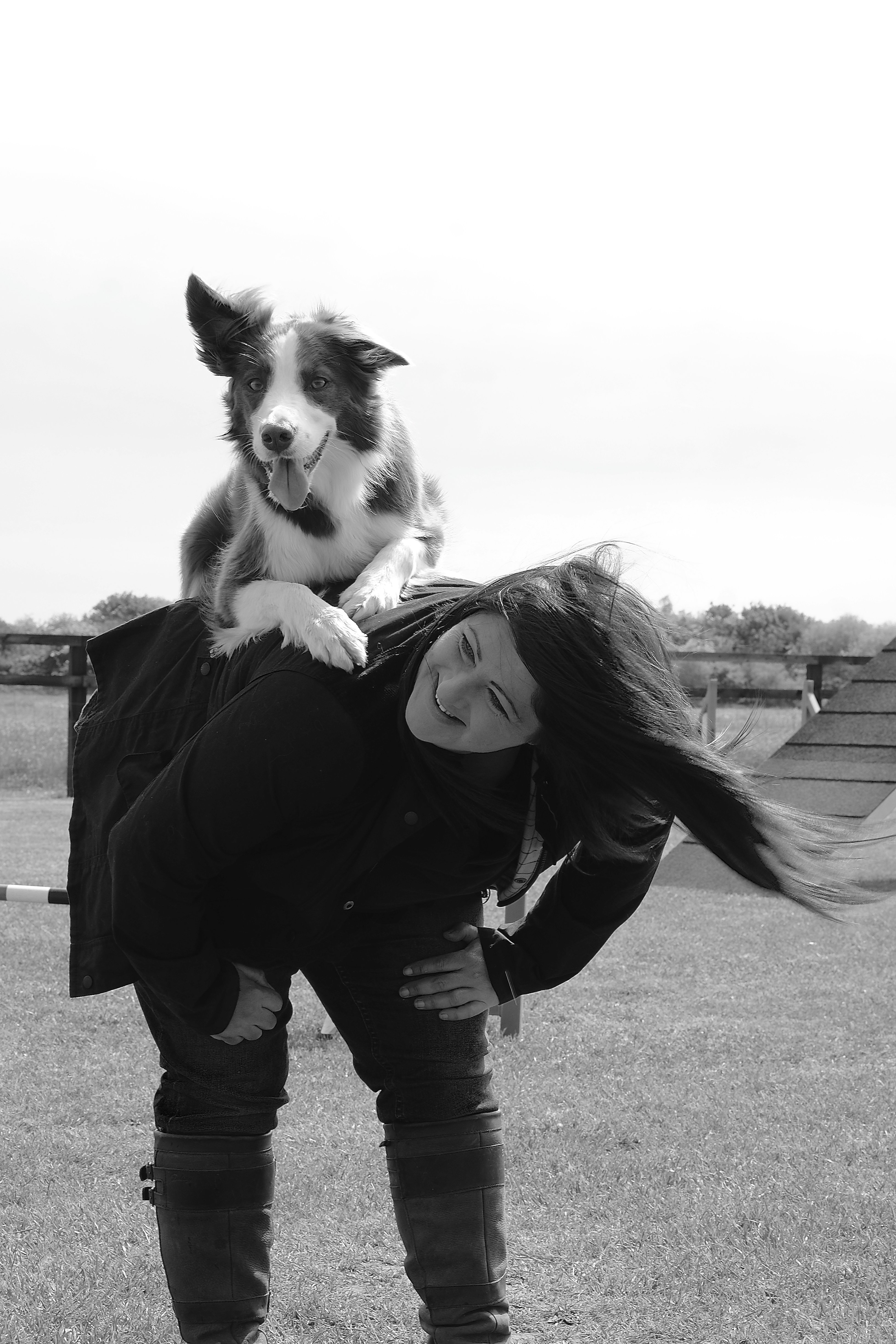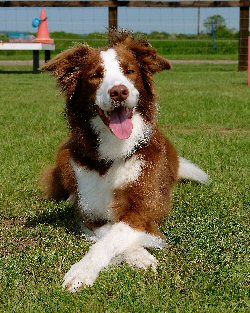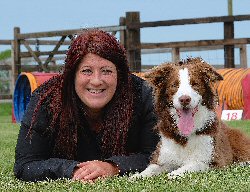Winter fun and games for agility dogs...
 This
year saw Nicola Smith and her typical craxy Collie unfortunately in a familiar position, having
to be on agility break due to injury. Kiah (Ki) has no fear - or respect - for
her physical wellbeing and is hell-bent on turning her owner prematurely grey!
Unsurprisingly, restricted exercise doesn’t suit Ki so Nicola always has a challenge on hand to make sure
that her dog is as tired as possible on her enforced agility breaks and this gives
her a push to be extra creative in her training! This
year saw Nicola Smith and her typical craxy Collie unfortunately in a familiar position, having
to be on agility break due to injury. Kiah (Ki) has no fear - or respect - for
her physical wellbeing and is hell-bent on turning her owner prematurely grey!
Unsurprisingly, restricted exercise doesn’t suit Ki so Nicola always has a challenge on hand to make sure
that her dog is as tired as possible on her enforced agility breaks and this gives
her a push to be extra creative in her training!
Even
before I fell in love with agility, I loved training tricks. I am constantly
amazed at the brilliance of our dog's minds and their capacity to learn, despite
the hindrance of having us as their trainers.
Besides teaching the dogs useful skills and confidence, trick
training is such amazing education for us about our dogs, how they think, how
they learn and how to communicate what we would like from them.
I feel that trick training is, at times though, a little
undervalued in the world of agility. It is seen as a fun to have but not very
important. And I would like to challenge that.
Teaching a good foundation of 'trick' behaviours makes teaching
almost everything else so much easier. Once the dog understands the basic skills
(go to a place, touch with paw, touch with nose, grab with their mouth etc.
etc.) it becomes very simple to teach behaviours which stem from these, whether
they be agility related or for everyday life. Above all, teaching this way helps
the dog to figure out solutions and engage their brains, which not only tires
them out but creates faster, more independent learning in the future.
All behaviours are 'tricks' to our dogs
No matter what is on your winter agility training plan, it is likely that
some of it is related to trick type behaviours. Whether it be improving turns,
teaching verbal discrimination or working on your dog's contact behaviour, all
can be improved with trick training.
I
have also known dogs who were lacking in motivation or confidence in agility to
improve radically after the introduction of more trick training, giving them
more ownership of their learning.
 Not every trick suits every dog
though. For example, if you have a Great
Dane you might not want to teach them to jump on your back! One of the great
things about trick training is how easily it can be tailored to each
partnership. Not every trick suits every dog
though. For example, if you have a Great
Dane you might not want to teach them to jump on your back! One of the great
things about trick training is how easily it can be tailored to each
partnership.
We all have
rest periods for our dogs whether due to injury or scheduled down time and
keeping active dogs calm at these times can be a real challenge. I find a good
mental workout is far more tiring than a physical one, and this is especially
useful if the dog in question is carrying an injury. So many tricks can be
adapted to suit young dogs, injured dogs and even elderly dogs, not something
that we can necessarily say of many areas of dog training or sports. It can be
done in the comfort of your own home, no matter the weather, and usually
involves nothing other than you, your dog and plenty of treats! And the list of
tricks to teach is endless, only limited by your imagination
Trickstar
Early in 2018 I started my Trickstar on-line trick training programme, a
course where I provide video breakdowns of each trick and participants post
their videos for feedback and celebration. The course has been far more popular
than I ever could have imagined, especially amongst agility dogs. To date my
dogs and I have filmed around 50 trick demos for the various levels and it keeps
growing all the time.
This year I
decided to create a Christmas trick video to give my girl and me something to
work towards. I tried to use a lot of different dog skills so that she would
have plenty to learn but because she had all the tools already we managed to
film A Christmas Tail all in a couple of days!
It
started off with the idea of having her dress the tree and then took on a life
of its own from there. All of the behaviours in
the video are just variations of a few key tricks, meaning that it was actually
very quick to train and film.
One of
the things I train in almost all behaviours is independence. I always like to
see that the dog can perform the behaviour with minimal involvement from me if
possible. This is very useful in agility for distance handling, but it was also
helpful in filming this video to give the idea that she was doing all these
things by herself! Now we are moving on to our next exciting video project.
Now we are
onto our next project.
 About
the author... About
the author...
Nicola Smith runs
Lucky Dog Training, based in Goldhanger,
Essex where she teaches agility and obedience.
She also runs the
Trickstars on-line trick training programme.
Nicola has three dogs, Lucky, Jenson and Kiah. She competes with
Kiah at Grade 7 - when she's not injured!
First published 11th December 2018
|